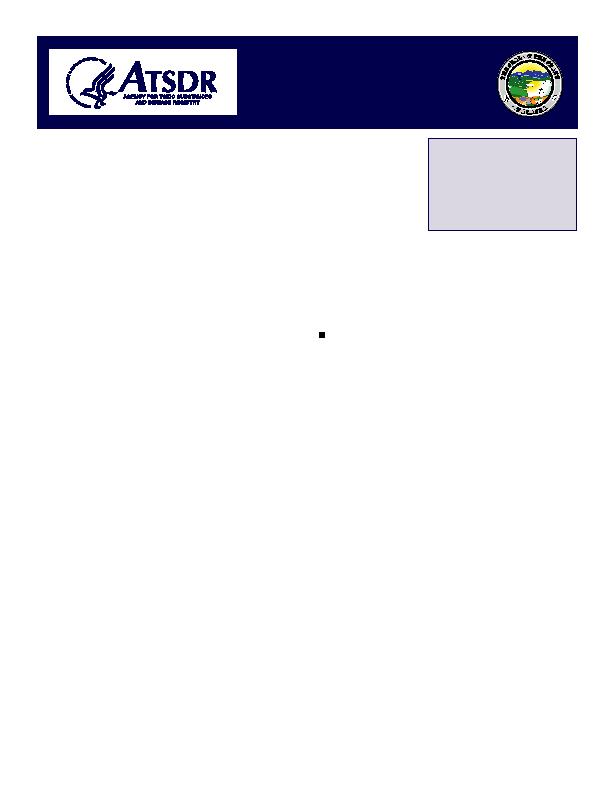
Activities in
Alaska
ATSDR in Partnership With
assessment is a
In fiscal years 19932002,
written, comprehen-
Alaska
ATSDR awarded more
sive evaluation of
The Agency for Toxic Substances and Disease
than
||content||
.9 million in direct
available data and
Registry (ATSDR) is the lead public health agency
funds and services to
information about
responsible for implementing the health-related provi-
Alaska.
the release of haz-
sions of the Comprehensive Environmental Response,
ardous substances
Compensation, and Liability Act of 1980 (CERCLA).
into the environment in a specific geographic area.
ATSDR is an Atlanta-based federal agency with more
Such releases are assessed for past, current, or future
than 400 employees and a budget for 2004 of approxi-
impact on public health. ATSDR, in collaboration
mately million. ATSDR assesses the presence and
with public health and environmental officials from
nature of health hazards at specific Superfund sites,
Alaska, has conducted 10 public health assessments in
helps to prevent or reduce further exposure and ill-
the state, including the following recent example.
nesses resulting from those hazards, and expands the
Fort Wainwright--Fort Wainwright is an active
knowledge base about the health effects of exposure to
U.S. Army installation in Fairbanks. Accidents or
hazardous substances.
waste management practices over the years have
ATSDR works closely with state agencies to
resulted in spills or releases of industrial materials
carry out its mission to serve the public by using
the best science, taking responsive public health
actions, and providing trusted health information
post are volatile organic compounds; pesticides;
to prevent harmful exposures and disease related
polychlorinated biphenyls; and petroleum, oils,
to toxic substances. ATSDR provides funding and
and lubricants.
technical assistance to states and other partners
In September 2003, ATSDR released a public
health assessment to evaluate exposure pathways
identify and evaluate environmental health threats
and respond to community members' concerns
to communities. These resources enable state and
local health departments and other grantees to further
originating at the site. ATSDR assessed past
investigate environmental health concerns and to
and current potential exposure pathways (via
educate communities. In fiscal years 19932002,
ATSDR awarded more than
||content||
.9 million in direct
did not identify public health hazards associated
funds and services to Alaska for financial support of
with the majority of the on-post contaminated
specific environmental health activities. In addition to
sites because they are not widely accessible
direct funds and services, ATSDR provides technical
to the public, they contain only low levels of
and administrative guidance for state-conducted site
activities.
contaminants were completed.
ATSDR assessed past exposures for three potential
ATSDR Site-Specific Activities
exposure pathways. The groundwater pathway
Public Health Assessment-Related Activities
from a nearby contaminated church well and
One of ATSDR's important mandates is to conduct
possible exposure pathways resulting from coal
ash and its use as road grit on the post posed
List (NPL) sites and of other sites where a significant
no apparent public health hazard. However,
threat to public health might exist. A public health
ATSDR concluded that on-post coal-fired power


 Previous Page
Previous Page
